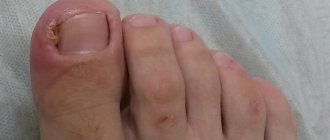Twisting of the intestine around the intestinal or mesenteric axis leads to intestinal obstruction. The disease is called volvulus. The intestinal walls are compressed, which leads to disturbances in the intestinal walls. Lack of supply of nutritional components and blood circulation leads to necrosis and peritonitis of the digestive tract.
The essence of pathology
In cases of volvulus, the intestinal loops twist around their axis or the mesenteric one. Transport of food is disrupted even when the baby's intestinal loop deviates 90 degrees from its normal direction. A larger angle causes compression of the arterial vessels and nerve branches passing between the layers of the mesentery. Volvulus can be observed in several areas or in one place.
As a result, a section of the intestine stops receiving nutrition, and the wall becomes necrotic. Following necrosis, vascular permeability increases, and effusion into the abdominal cavity begins. The intestinal wall ruptures and the contents exit into the abdominal cavity. This means that fecal peritonitis is developing. This creates a mortal danger for the baby. The only way to save the child is urgent surgery.
Why does it occur in infants?
The most common cause of intestinal volvulus, as observed by pediatric surgeons, is congenital developmental anomalies. They are more concerned with the small intestine. Determined in a newborn or under one year of age.
If the intrauterine formation of the fetus is disrupted, anatomical deviations are possible:
- excessively long mesentery (the most common cause of small intestinal volvulus);
- violation of the size of the initial and final sections of the intestine;
- internal hernia;
- formation of a cyst or tumor on the mesentery;
- functional insufficiency of the sphincter system and valves of the gastrointestinal tract;
- connection of intestinal loops by the common mesentery.
The development of anomalies is associated with:
- with a complicated pregnancy;
- forced treatment of the expectant mother with antibacterial drugs;
- malnutrition;
- hereditary disorders.
In infants, the first signs of obstruction may begin with the introduction of complementary foods or a sudden transition to artificial feeding
What matters is the unpreparedness of the underdeveloped digestive system to accept a new food substance. A reaction occurs in the form of impaired peristalsis: instead of alternating contractions of the circular and longitudinal fibers, pronounced spasms and a reverse wave are formed. Volvulus is caused by constipation in infants and stagnation of feces.
Causes
The following reasons can provoke intestinal blockage:
- prolonged constipation;
- foreign body ingress (swelling may form);
- pinching, abdominal injuries;
- regular overeating;
- hiatal hernia;
- infections, polyps;
- long mesentery;
- helminthiasis, blocking the internal space of the intestine;
- development of adhesions, tumor formations;
- paresis or intestinal spasms.
Torsion of loops in newborns occurs due to pathologies of intrauterine development. The organ defect is manifested by torsion. In infants, torsion occurs due to overfeeding with breast milk. Transferring a child under one year of age to formula milk can also provoke bloat. Early introduction of complementary foods also results in intestinal torsion.
Volvulus can lead to inflammatory processes in the abdominal cavity. Infants are more susceptible to the disease than older children. The consumption of fermented milk products and solid foods is limited. Children over three years of age are susceptible to bloat due to poor diet.
Pathological conditions that contribute to bloat in a child
At the age of 6 years, a common cause is the formation of a helminthic ball in the intestines to the point of complete obstruction. Other reasons include:
- dehydration of the body due to lack of drinking, in the heat, in cases of severe intoxication;
- abdominal injury;
- functional or pathological spasm and intestinal paresis;
- adhesions after surgery or untreated enterocolitis;
- compression of intestinal loops by a tumor formation or cyst;
- Hirschsprung's disease is a rare congenital disease, determined by the absence of nerve endings in the wall of the large intestine, in these areas peristalsis is impossible, constipation occurs; but the overlying intestine actively contracts, this creates conditions for volvulus of the sigmoid colon in newborns;
- megacolon is a congenital anomaly, expressed in a significant enlargement of the large intestine and underdevelopment of the system of nerve endings, manifested by persistent constipation from the first month of life.
Possible consequences
Volvulus is a condition that poses a threat to the life of a child.
In the absence of timely treatment or emergency medical care, there is a risk of death of the patient. The main danger of the disease is peritonitis, during which general blood poisoning occurs.
The most serious condition is total volvulus, accompanied by significant disruption of the circulatory system. The general symptoms of the disease may manifest themselves with minimal symptoms.
The consequences of intestinal volvulus can be the following conditions:
- intoxication of the body;
- intestinal rupture;
- peritonitis;
- gangrene;
- sepsis;
- inflammation of the peritoneum;
- perforation formation;
- dehydration of the body;
- death;
- increase in body temperature to critical levels;
- intestinal obstruction.
Symptoms of volvulus in children
Clinically, volvulus is manifested by mechanical obstruction at the site of torsion. Attentive parents can notice the initial symptoms. The pain syndrome occurs suddenly, the child screams. Older children describe the cramping nature of the pain. Pain shock may develop.
Repeated painful vomiting with an unpleasant odor. In case of small intestinal obstruction, first the food eaten, then the intestinal stool. Vomiting does not bring relief; it is more pronounced with volvulus of the small intestine. A rare gag reflex indicates a lesion in the large intestine.
Asymmetrical bloating of the abdomen due to overinflation of the adductor colon and collapse of the efferent colon, tension in the muscles of the abdominal wall. In the initial period, the passage of feces, then complete retention of stool and gases. When giving an enema, if a volvulus occurs in the small intestine, feces are released from the lower sections, and blood may be included.
A strangulated umbilical hernia creates conditions for intestinal torsion
Temperature rises to high levels with an abrupt decline. Babies often hiccup for three days, even after surgery. In a newborn baby, during volvulus, attention is paid to the cyanosis of the nasolabial triangle and the tendency to pull the knees towards the body. In the subacute course, attacks are accompanied by breaks and improvement. At the height of the illness, the baby becomes weak, lethargic, and restless. These are signs of increasing intoxication.
Danger of intestinal obstruction
With advanced obstruction, feces are sometimes thrown into the stomach. In this case, intussusception in children makes itself known by vomiting with a characteristic odor. The phenomenon is considered extremely unfavorable for the body, because it is poisoned by waste and toxins. If parents hesitate to go to the clinic, twisting of the intestine will lead to such consequences as:
- sepsis;
- peritonitis;
- dehydration;
- necrosis of intestinal tissues;
- rupture of the problematic intestine;
- violation of water-salt balance.
In the worst cases, death occurs from volvulus of the large or small intestine. But even if the child survives, intussusception affects his further development and causes diarrhea or constipation.
Dangerous complications
The goal of starting therapy within the first 3 days from the onset of volvulus symptoms is to avoid complications. When they occur, the child’s condition sharply worsens and the prognosis for a successful outcome decreases.
Dehydration
Frequent, painful vomiting contributes to the loss of a significant amount of fluid and electrolytes. There is no absorption of the liquid part of feces in the colon during volvulus, which further aggravates the state of dehydration:
- blood thickens;
- blood pressure decreases;
- the strength of heart contractions decreases.
First of all, the brain suffers (dizziness, drowsiness, loss of consciousness). If 15% of fluid is lost, the patient dies.
Intoxication
Due to the increased permeability of necrotic areas of the intestine, non-neutralized waste and toxic substances enter the bloodstream through it. The body reacts with an increase in temperature, chills, muscle pain and headaches.
Wall perforation
Perforation (perforation) of the intestinal wall occurs as a result of its thinning due to poor nutrition. Therefore, a wave of peristalsis causes rupture of the intestine that has lost its strength. The contents of the loop (waste, poisons, feces, intestinal bacteria) enter the abdominal cavity. This is how fecal peritonitis is formed. The leaves of the peritoneum have a high absorption capacity. Through them, all toxic substances will additionally enter the bloodstream and further increase intoxication.
Gangrene of the wall
Necrosis of an area of the intestine with cessation of blood supply is called gangrene. Dead tissue enters the abdominal cavity during peritonitis. Therefore, for treatment it is so important to remove (excise) non-viable tissue in a timely manner. Then rinse the abdominal cavity repeatedly with antimicrobial agents.
Sepsis
Sepsis is a pathological condition caused by pathogenic microbes entering the bloodstream. They spread throughout the body, forming ulcers in any organ. Manifests itself as severe intoxication and resistance to antibiotics.
Adhesive disease
Adhesions are the growth of scar tissue at the site of former inflammation. They begin with the loss of fibrin film. The adjacent loops then become glued together, and the scar tissue displaces and changes the normal position of the loops. When it grows, the loop may be compressed. This promotes volvulus and poses a threat to life, since the adhesions will not disappear on their own.
Removed area with internal volvulus of the small intestine and gangrene
Clinical manifestations
Symptoms of the disease are associated with the resulting intoxication of the body. The mechanism of its appearance is determined by blocking the access of blood to the intestinal sections. During torsion, a significant part of the intestine is compressed, and the blood supply and innervation to this and nearby areas and the mesentery are cut off. Without blood flow, nutrients and oxygen do not enter the tissues, and necrosis develops. When the intestinal lining dies, its permeability increases, which serves as an entry point for toxins and infection, causing fecal peritonitis.
The onset of the disease is characterized by general symptoms of intestinal dysfunction, which develop into symptoms of obstruction:
- Dyspeptic disorders. The first manifestations are nausea and vomiting. Rare vomiting indicates damage to the thick part, profuse vomiting indicates damage to the thin part. Vomit has a strong pungent odor.
- Stopping gas emissions within a few days.
- Stool disorders in the form of constipation due to blockage of a section of the intestine.
- Bloating or hard belly syndrome.
- Pain in the abdominal area. Severe cramping pain appears in the abdomen, the patient takes a forced position in bed.
In infants, at the onset of the disease, severe pain is replaced by periods of relief; the child can fall asleep and eat. As it worsens, weakness and moodiness appear. During the period of intoxication, body temperature rises and vomiting occurs. Before the complete cessation of bowel movements, blood elements are detected in the stool.
Intoxication is life-threatening for children and adults. The condition is dangerous due to the development of dehydration of brain tissue, systems and organs.
Diagnostics
It is difficult to hold a small child in front of the X-ray screen or give him barium to drink. The basis of diagnosis is the experience of surgeons. When palpating the abdomen, the specialist palpates the swollen soft formation of the afferent loop, an empty space in the area of the efferent intestine.
Pay attention to the asymmetrical bloating of the child’s abdomen. A digital examination reveals an empty rectum. The absence of peristalsis is judged by auscultation of the abdomen and splashing noise. It is very difficult to distinguish intestinal volvulus from appendicitis in a small child. Almost final confidence in the diagnosis comes during surgery and visual examination of the intestine.
Tests suggest inflammation: leukocytosis and ESR are increasing. In the severe stage, the hematocrit drops due to dehydration, and electrolytes decrease.
How to recognize an infection?
The most common infection is rotavirus
One of the most dangerous causes of diarrhea is infection: most often it is caused by rotavirus, but salmonella, staphylococcus, enterococcus and other bacteria can enter the intestines. Bacterial infection can lead to severe toxicosis and dehydration, so it is important to react in time to the onset of the disease and provide assistance as quickly as possible. Parents of babies under six months need to especially hurry - dehydration develops rapidly and in rare cases it becomes the cause of death. Diarrhea is the body’s protective reaction to foreign microorganisms, and in case of infection it will be accompanied by several symptoms:
- Temperature increase. It can reach 39 degrees, and help must be provided as soon as possible. In infants, the temperature is most often measured rectally: a thermometer is smeared with Vaseline and inserted 2 cm into the anus. Temperature measurement takes 3 minutes.
- The appearance of stool with mucus, there may be blood streaks in it. The discharge becomes frequent and watery.
- The child becomes lethargic and drowsy, tears do not appear when crying, in addition, drying of the lips and mucous membranes may occur. All this indicates dangerous dehydration, and measures should be taken as soon as possible.
- Repeated vomiting, refusal to eat. The child will be lethargic and pale, and signs of general malaise will appear.
If signs of infection appear, it is necessary to call an ambulance: the baby and his mother will be hospitalized in a hospital, and he will be prescribed intensive care. Only a doctor can prescribe the right medications: you cannot use any “folk remedies” and wait until everything goes away on its own. Moreover, you should not give “adult” medications to a small child: an incorrect dosage can lead to additional poisoning and subsequent dysbacteriosis.
Infectious lesions of the body often develop rapidly: in just a few hours, a fever appears, vomiting, frequent sharp stools are observed, the child begins to cry and refuses to eat. Repeated vomiting and frequent bowel movements are the most common signs of infection and should be addressed quickly.
Treatment
If similar symptoms appear, you must call an ambulance. Children, together with one of their parents, are hospitalized in the surgical department and are first observed. They are trying to relieve the volvulus and pain with novocaine blockade. The meaning of conservative measures is to relieve increased tension in the adductor loop and spontaneous deployment of the node.
Saline solutions, anti-shock drugs, painkillers, and Hemodez are administered through the subclavian vein to combat intoxication. Be sure to wash the intestines with a siphon enema. The condition improves with gastric lavage and installation of a thin gas outlet tube. Antibacterial drugs are administered intravenously or intramuscularly, depending on the child’s condition.
Symptoms and treatment of intestinal diverticulosis
Surgical treatment consists of straightening the loops and securing the mesentery if the intestinal tissue is viable. If necrotic areas are present, they must be removed (bowel resection).
The undamaged ends are connected using one of the methods. The adhesions are dissected. In specialized clinics, surgery is performed using laparoscopic technology.
In severe cases of peritonitis and inflammation of the intestinal loops, the ends cannot be sutured until the inflammatory reaction has resolved. Then you have to operate step by step:
- First, the necrotic area is removed and the stoma is placed on the skin of the abdomen (feces will flow into the colostomy bag);
- after the peritonitis is cured, about 3 months later, the second stage is carried out - the ends of the intestine are connected and the stoma is removed.
For newborns, a permanent catheter is installed in the umbilical vein for long-term fluid transfusion.
How to deal with dehydration due to diarrhea?
The color and smell of stool during diarrhea carry maximum information
Dehydration is one of the most dangerous consequences of diarrhea and should be stopped as quickly as possible. A loss of 5% or more of a child’s body weight is considered dangerous, and in infants a life-threatening condition can develop very quickly. Severe dehydration is indicated by lethargy, sunken fontanel; in severe cases, the skin becomes flabby, and the nose and fingertips may become blue. Before the ambulance arrives, parents must themselves help the child cope with dehydration. With a slight degree of dehydration, the loss of fluid can be compensated for by various types of fluid:
Nutritional Features
After successful conservative straightening of the volvulus, the risk of recurrence remains. Parents are informed about the prognosis and are recommended to organize dietary meals for the baby. Feeding must be done 6 times a day. All dishes should be pureed and easy to digest.
Liquid porridges made from oatmeal, rice, buckwheat, jelly, and slimy soups are suitable. You can add milk to them, but not fat. It is best for infants to continue breastfeeding. Dishes made from raw vegetables, juices, and flour products should not be allowed.
Why do relapses occur?
The operation was successful, the volvulus was straightened. But the patient or the baby’s parents are warned about the danger of relapse (repetition). Surgeons believe that the following play a role in the occurrence of relapses:
- Reduced scope of surgical intervention due to the severity of the patient’s condition (the loop was “untwisted”, but a long mesentery and a mobile cecum remained). Relapse can be avoided by suturing the wrapped loop to the abdominal wall.
- The formation of adhesions between the intestines, gluing together different parts of the intestine and predisposing to a new volvulus.
To prevent relapse, it is recommended:
- control the diet, avoid long breaks and overfeeding;
- prevent constipation, do not use laxatives;
- remember the importance of physical activity for a child, do joint exercises, and take more walks.
What to do when the baby grows?
As children grow older, anatomical anomalies become less dangerous or are completely eliminated. The consistency of the intestinal sphincters is improved. The size of the intestines becomes proportional. The body adapts quite well to life with its own characteristics.
But a threat can arise when chronic diseases appear during adolescence. Therefore, when raising a child, you need to pay attention to proper nutrition, avoiding any alcohol, soda, or fast food. The disease spares neither children nor the elderly. Seeking medical help gives you a chance not only to stay healthy, but also to survive.










